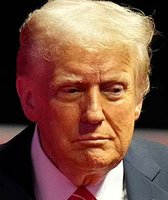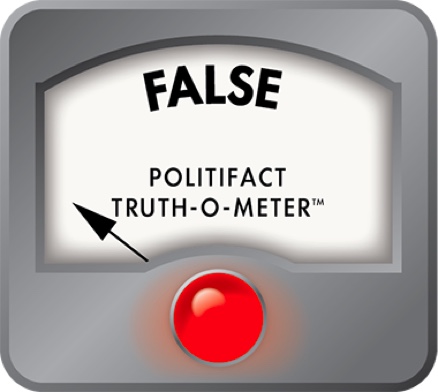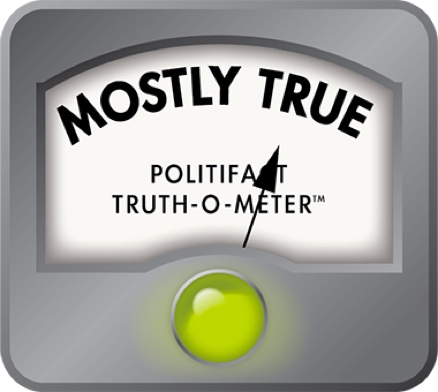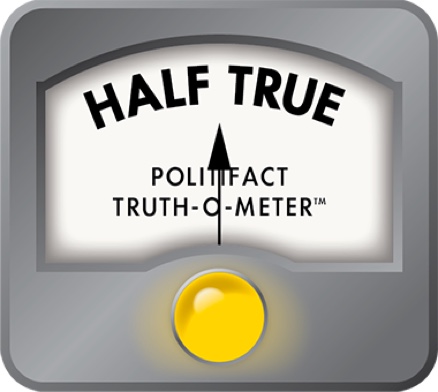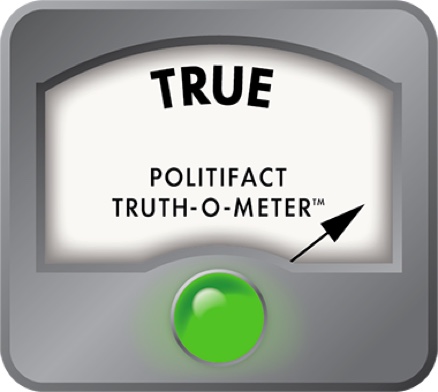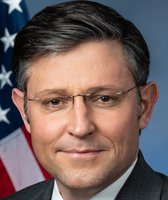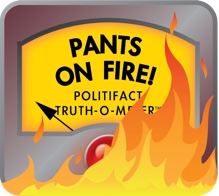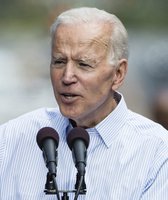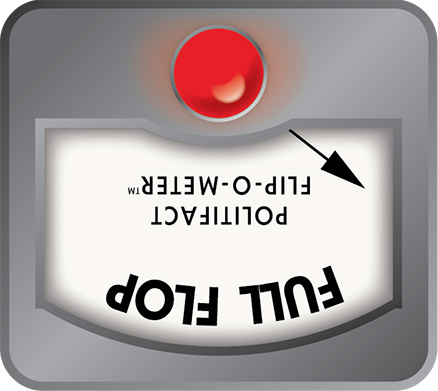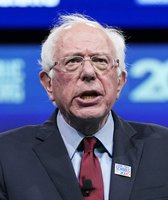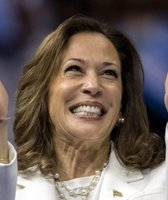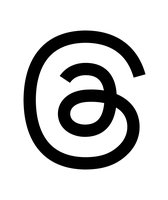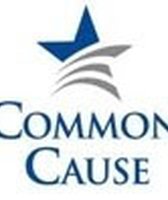Stand up for the facts!
Our only agenda is to publish the truth so you can be an informed participant in democracy.
We need your help.
I would like to contribute
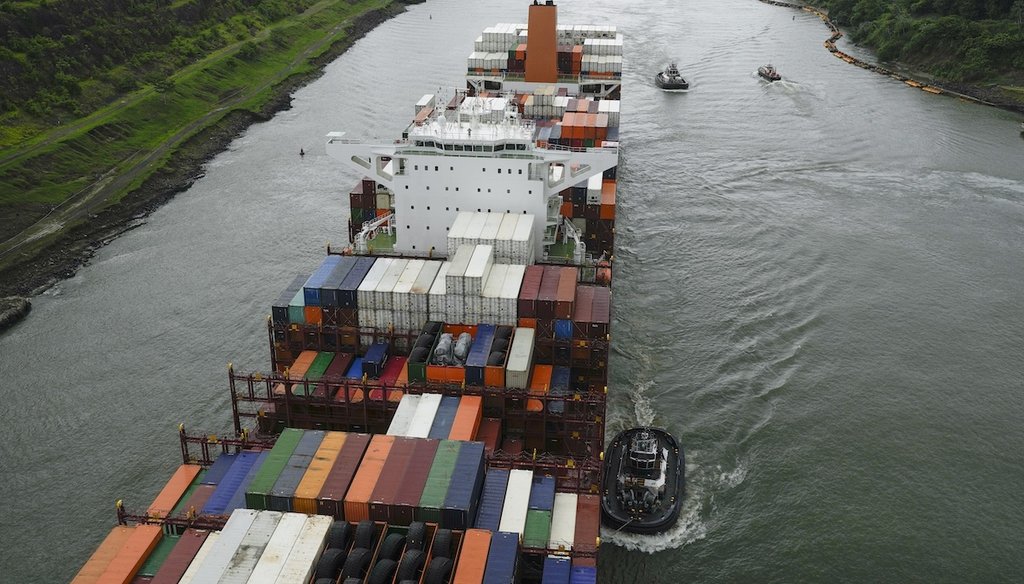
A cargo ship sails through the Panama Canal in June 2024. (AP)
Imposing tariffs is one of the constants linking Donald Trump’s first and second presidencies.
During his first term, Trump applied tariffs to imported solar panels, washing machines, steel and aluminum, and billions of dollars of Chinese goods. Then, during his 2024 presidential run, he offered an even more aggressive trade agenda, promising a 10% to 20% tariff on all nondomestic goods sold in America, a 60% tariff on goods from China and reciprocal tariffs on nations that impose tariffs on the U.S.
Since taking office Jan. 20, Trump has threatened still more tariffs, proposing 25% on goods from Mexico and Canada, an additional 10% on China and 25% on Colombia after that country initially refused deportation flights from the U.S. (He walked back the Colombia tariff threat.)
Presidents have broad authority to order tariffs. But economists say tariffs are self-defeating, raising prices on domestic consumers (who might have to pay more for tariffed goods) and domestic exporters (who may face retaliatory tariffs from trading partners).
We examined more than a dozen academic and think-tank studies and queried experts to learn more about the effect of Trump’s first-term tariffs. Some studies found gains for domestic industries that had foreign competitors hit with tariffs, but numerous analyses found that, on balance, tariffs' negative impacts on the economy and consumer costs were bigger.
Sign up for PolitiFact texts
In many cases, the Biden administration continued the tariffs Trump imposed, although sometimes with adjustments.
What do the first-term tariffs portend for his second-term tariff proposals? Economists say new tariffs could put even more downward pressure on the economy because, as proposed, they are less targeted.
When contacted for comment, the White House didn’t address the studies’ findings. It said, instead, that Trump’s new tariffs won’t harm consumers because Trump’s approach is forcing companies to consider moving operations to the U.S., which would, in turn, spare U.S. consumers the impacts of higher tariffs.
Companies the White House cited that are considering moving dryer production to the U.S. include Samsung Electronics Co. (for dryers), LG Electronics (for refrigerators), Alcoa Corp. (aluminum), Hyundai Steel Co. and Apple.
In 2018, Trump levied 25% tariffs on steel and 10% tariffs on aluminum, although some countries, including major trading partners Canada and Mexico, were fully or partially exempted. Under President Joe Biden, the U.S. negotiated with Europe and Japan to lift those tariffs, but tariffs on other countries, notably China, remained in place.
Trump also authorized tariffs on billions of dollars of Chinese products, prompting China to retaliate with tariffs of up to 25% on U.S. exports to China. Also, Trump imposed up to 30% tariffs on solar panels and a 20% tariff on washing machines.
Most independent studies of Trump-imposed tariffs found harms for the economy as a whole and for consumers in particular. Here are some of the key findings:
-
U.S. inflation-adjusted income would have been $1.4 billion higher per month by the end of 2018 without the tariffs, said one 2019 paper by co-authors from the Federal Reserve Bank of New York, Princeton University and Columbia University,
-
After comparing gains and losses, the nation and its consumers lost $7.2 billion on balance during the initial wave of tariffs, said a 2019 paper by economists from UCLA, Yale University, the University of California, Berkeley and Columbia University.
-
Trump-era tariffs "increase consumer costs by roughly $51 billion annually," a 2022 analysis by the American Action Forum, a center-right think tank, said.
-
Trump’s first-term tariffs were akin to a $625 per household tax increase per year, a 2025 paper by the Tax Foundation, another center-right group.
Strikingly, a 2019 paper by researchers at the Federal Reserve and the University of Chicago found that Trump’s tariffs not only increased the cost of both the products they were levied on and closely related products that were not tariffed. The paper said that although tariffs targeted only washing machines, the prices for both washers and dryers rose by about 12%.
Tariffs hurt exporters too, studies show. Exports for domestic companies making products affected by tariffs grew 2 percentage points more slowly than companies making products unaffected by tariffs, a 2019 paper by researchers from the University of Michigan, the U.S. Census Bureau and the Federal Reserve found.
Meanwhile, some analyses characterized tariffs’ impacts as modest. One 2019 study, for example, used the word "mixed" to describe the retail-level impact.
"Some affected product categories have seen sharp price increases, but the difference between affected and unaffected products is generally quite modest," the authors wrote. They speculated this might have stemmed from retailers stocking up on soon-to-be tariffed products between the announcement and the date the tariffs would take effect.
And 2022 research published by the Peterson Institute for International Economics, a think tank that generally favors free trade, cautioned that lifting tariffs on Chinese products "would put only a small, short-lived dent in overall inflation."
A 2023 study by the International Trade Commission, a federal agency, found gains by domestic steel and aluminum makers, with U.S. steel production rising 5% from 2017 to 2021 and domestic steel producers announcing "plans to invest in and greatly expand" at the time the report was released.
Nevertheless, multiple studies found that, despite such benefits, tariffs are an inefficient way to deliver gains to domestic producers, producing limited gains for certain companies or sectors but at a larger cost to consumers and the economy.
A 2024 paper concluded that the Trump first-term tariffs have not "provided economic help to the U.S. heartland." The paper, by researchers from the Massachusetts Institute of Technology, the University of Zurich, the World Bank and Harvard University, said the tariffs had limited positive or negative effects on employment in the sectors protected by tariffs, and hurt employment in other sectors, including agriculture.
Similarly, a 2024 paper found that although the solar panel tariffs led to modest gains for domestic manufacturers, they "reduced domestic solar industry employment and wages on net."
Tariffs can also have other, less tangible impacts, said Kent Jones, a Babson College emeritus economics professor.
Global investment in trade-related activities "declined by an estimated $1 trillion because of Trump’s uncertain effect on trade policy during his first term," Jones said. "Without a stable, rules-based trade environment, risk-averse businesses won’t invest in projects whose value can be damaged by random trade policy decisions."
Economists say Trump’s second-term tariffs, if carried out as promised, could put even more downward pressure on the economy, because he’s framed them as across-the-board, rather than targeted to particular consumer products or commodities.
Across-the-board tariffs, such as Trump’s proposed 10% to 20% tariff on all imported goods or his potential levies on Canadian and Mexican products, make it harder, or even impossible, for a company or a consumer to avoid the tariff by purchasing from another country.
"When tariffs are imposed on just one country, say China, there is scope for trade diversion, such as importing from Vietnam instead," said Douglas Irwin, a Dartmouth College economist. "When tariffs are across-the-board, many more countries are affected, and there is no scope for trade diversion. The costs will be higher, and the potential for foreign retaliation will be great."
Also, if Americans are facing a tariff only on washing machines, they can avoid it if they stick with the model they already have. That’s harder to do with across-the-board tariffs, because they could affect everything from Mexican avocados to zippers — a Japanese company makes half the world's zippers, said Ross Burkhart, a Boise State University political scientist who studies trade issues.
Another difference with targeted tariffs is that retailers can diffuse tariff price increases, and make them less daunting to consumers. by spreading them over a wider variety of items. That’s harder to do if a wide swath of products is targeted.
Although the White House has predicted companies will move their operations to the U.S. to avoid tariffs’ consumer impacts, economists are doubtful that such shifts will be enough to protect consumers. Producing everything in the U.S. is "fine until it comes to things like bananas," said Douglas Holtz-Eakin, president of the American Action Forum. "We don’t literally make everything. It’s not realistic."
Our Sources
PolitiFact, "Can President-elect Donald Trump enact tariffs without Congress? And can anyone stop him?" Dec. 2, 2024
PolitiFact, "Economists say JD Vance is wrong about benefits of tariffs outweighing negatives," Aug. 29, 2024
Cato Institute, "Americans Paid for the Trump Tariffs—and Would Do So Again," Aug. 19, 2024
Cato Institute, "Separating Tariff Facts from Tariff Fictions," April 16, 2024
Mary Amiti, Stephen J. Redding and David E. Weinstein, "The Impact of the 2018 Tariffs on Prices and Welfare" (Journal of Economic Perspectives), Fall 2019
Pablo D. Fajgelbaum, Pinelopi K Goldberg, Patrick J Kennedy and Amit K Khandelwal, "The Return to Protectionism" (The Quarterly Journal of Economics), Nov. 28, 2019
May 10, 2022
Tom Lee and Jacqueline Varas, "The Total Cost of U.S. Tariffs" (American Action Forum), May 10, 2022
Tax Foundation, "Trump Tariffs: Tracking the Economic Impact of the Trump Trade War," Jan. 23, 2025
Aaron Flaaen, Ali Hortaçsu, and Felix Tintelnot, "The Production, Relocation, and Price Effects of US Trade Policy: The Case of Washing Machines" (Becker Friedman Institute), April 2019
Kyle Handley, Fariha Kamal, and Ryan Monarch, "Rising Imports Tariffs, Falling Export Growth: When Modern Supply Chains Meet Old-Style Protectionism" (Federal Reserve Board International Finance Discussion Paper), 2020
Alberto Cavallo, Gita Gopinath, Brent Neiman and Jenny Tang, "Tariff Passthrough at the Border and at the Store: Evidence from U.S. Trade Policy" (National Bureau of Economic Research), October 2019
Katheryn (Kadee) Russ "Tariffs on Chinese imports have only marginally contributed to US inflation" (Peterson Institute for International Economics) Jan. 13, 2022
U.S. International Trade Commission, "Economic Impact of Section 232 and 301 Tariffs on U.S. Industries," May 2023
David Autor, Anne Beck, David Dorn and Gordon H. Hanson, "Help for the Heartland? The Employment and Electoral Effects of the Trump Tariffs in the United States" (National Bureau of Economic Research), January 2024
Bryan Bollinger, Todd Gerarden, Kenneth Gillingham, Drew Vollmer and Daniel Yi Xu, "Strategic Avoidance and the Welfare Impacts of Solar Panel Tariffs," March 21, 2024
M. Iacoviello Caldera, P. Molligo, A. Prestipino and A. Raffo, "The Economic Effects of Trade Policy Uncertainty" (Federal Reserve Board International Finance Discussion Paper), 2019
Gary Clyde Hufbauer and Sean Lowry, "US Tire Tariffs: Saving Few Jobs at High Cost" (Peterson Institute for International Economics), April 2012
Email interview with Scott N. Paul, president of the Alliance for American Manufacturing, Jan. 23, 2025
Email interview with Dean Baker, co-founder of the Center for Economic and Policy Research, Jan. 22, 2025
Email interview with Douglas Irwin, Dartmouth College economist, Jan. 22, 2025
Email interview with Ross Burkhart, Boise State University political scientist, Jan. 23, 2025
Email interview with Kent Jones, emeritus professor of economics at Babson College, Jan. 25, 2025
Interview with Douglas Holtz-Eakin, president of the American Action Forum, Jan. 23, 2025


